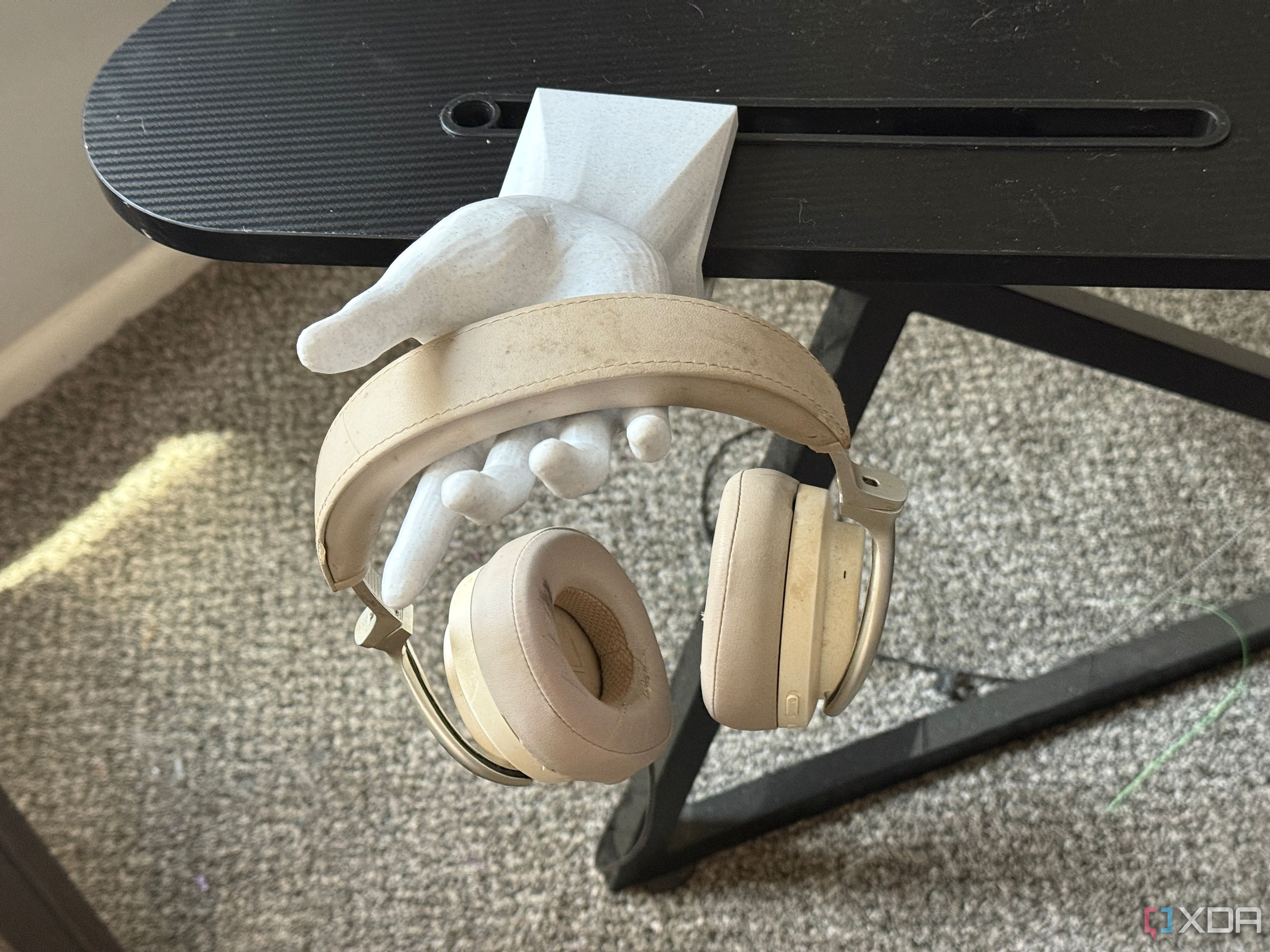Like most 3D printing enthusiasts, I started out thinking that a filament dryer was a must-have accessory. Humidity can ruin a spool faster than you'd expect, and I've seen firsthand how wet filament can lead to poor results. So yes, I bought a dryer and used it regularly at first. However, over time, I discovered a more suitable solution that integrates more naturally into my workflow and is far less expensive to maintain.
Instead of constantly running filament through the dryer, I've turned to an airtight plastic cereal container. These containers, paired with a 3D-printed insert that holds desiccant beads and a digital hygrometer, effectively keep my filament dry with minimal effort. They're inexpensive, stack well, and make it easy to monitor storage conditions. I still keep my dryer on hand for emergencies, but it's rarely needed these days.

Related
7 common 3D printing mistakes I learned to avoid
3D printing beginners often make the same mistakes, but I've got tips on how to avoid them
Why dry filament actually matters in 3D printing
Humidity will ruin your filament faster than you think.
One of the biggest quality killers in 3D printing is moisture. Even materials that seem dry to the touch can absorb enough water from the air to affect print performance. This often manifests as stringing, bubbling, or poor layer adhesion during printing. If your filament has absorbed too much water, prints can fail entirely or become mechanically weak.
This is especially true for hygroscopic filaments like nylon and PETG, though even PLA isn't immune. Humidity in the air slowly seeps into the filament, and over time, it builds up. Most of us don't store our spools in climate-controlled rooms, so moisture is always a risk. A dryer can reverse the damage, but that doesn't mean it's the only way to stay ahead of the problem.
Filament drivers work by applying low, consistent heat over several hours. That helps drive out the moisture that has built up inside the material. But running a dryer every time I swap filaments feels like overkill. If I can prevent the problem in the first place, I'd much rather do that.
Why I switched to dry storage for my filament
Containers are easier and cheaper to manage
I started experimenting with airtight cereal containers because I already had a few in my kitchen. They seal tightly, hold a spool perfectly, and cost just a few dollars each. Once I added a 3D printed insert to hold desiccant beads and a hygrometer, this setup started making a lot of sense. It wasn't long before I printed more inserts and bought a stack of containers just for filament.
These containers do a great job of passively maintaining the proper humidity level. The desiccant beads handle moisture control, and the hygrometer gives me a real-time reading of the conditions inside. I can tell from a glance whether a spool is still good to go. If humidity creeps in, I recharge the beads in the oven and drop them back in.
This approach fits neatly into my workflow. I don't have to wait for hours while a spool bakes in the dryer. There's no fan noise, no power draw, and no risk of accidentally overheating a filament that is sensitive to prolonged heat exposure. I just pop the spool in the container when I'm done printing, and I'm covered.
How you can build this storage system
A few parts to keep things dry
Getting started with the setup is straightforward. You'll need cereal containers large enough to fit your spools, preferably with a tight silicone seal on the lid. Then, you'll want to 3D print a small tray or platform to hold your desiccant beads and hygrometer. Numerous free designs are available online that clip into common container styles, or you can design your own to suit your specific needs.
|
Large dry food storage containers (I recommend a 4L container) |
|
|
Digital hygrometer |
|
|
Desiccant beads |
|
|
Enclosure for hygrometer and desiccant |
Many options available to 3D print from MakerWorld, Cults3D, etc. |
The desiccant beads are reusable, and most come with color indicators to show when they need to be dried out. I use blue to pink beads and toss them in the oven at 250°F for an hour to recharge. The hygrometer is optional, but I highly recommend it. This helps you know instantly whether your container is doing this job. If the reading stays under 25% relative humidity, I know that'll be safe.
To put it all together, place the spool in the container, add the desiccant tray and hygrometer, and then seal the lid. That's it. I label each container by filament type and color to quickly find what I need. It's simple, effective, and has saved me from having to use the dryer more than once.
When I still use my filament dryer
My recovery tool for the occasional mistake.

Despite my best efforts, sometimes I forget to put a spool away. Or I get lazy and leave it on the printer for a couple of days between prints. When that happens, I don't trust the containers alone to fix the issue. That's when I plug in the filament dryer and let it do its thing. It's not something I need every week, but I'm glad it's there.
The dryer works well as a recovery tool. If a spool feels brittle, prints poorly, or exhibits visual signs of moisture, such as stringing or popping, I run it through a drying cycle to remove any moisture. Depending on the filament type, this process may take 4 to 6 hours at a relatively low temperature. Once it's dry again, I return it to the container for safekeeping.
So, while I no longer rely on my filament dryer for day-to-day storage, I don't consider it obsolete. It's just moved to the background. The containers keep my filament in good condition, and the dryer steps in only when needed.
Why this approach works best for me
Using cereal containers with desiccant and hygrometers has helped me avoid a lot of frustration. It's a passive, low-maintenance system that integrates well into my printing space. I don't waste time waiting for a dryer unless absolutely necessary. My parents are consistent, my filaments stay dry, and my workload runs smoother because of it.
Make no mistake, filament dryers do have their place, especially when things go wrong. But I have found that prevention is easier than recovery. With this setup, I spend less time troubleshooting and more time actually printing.
.png)










 English (US) ·
English (US) ·